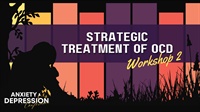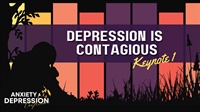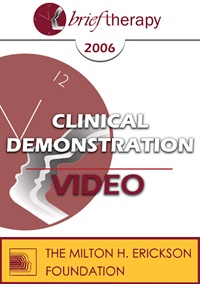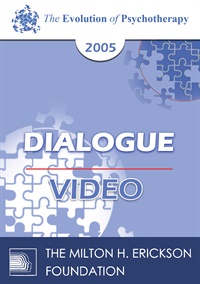- Average Rating:
- Not yet rated
- Topic Areas:
- Workshops | Depression | Experiential Therapy | Hypnosis
- Categories:
- Anxiety and Depression Conference 2024
- Faculty:
- Michael Yapko, PhD
- Course Levels:
- Master Degree or Higher in Health-Related Field
- Duration:
- 1:55:45
- Format:
- Audio and Video
- Original Program Date:
- Sep 14, 2024
- Short Description:
- This workshop illustrates how hypnosis empowers depressed clients by teaching skills rather than prescribing labels or pills. Yapko shows how trance fosters expectancy, resilience, and self-discovery, offering a powerful antidote to rumination and helplessness. Participants learn how hypnosis provides a flexible, experiential context for change, helping clients reframe their history and embrace new possibilities.
- Price:
- $59.00 - Base Price
- Average Rating:
- Not yet rated
- Topic Areas:
- Workshops | Obsessive Compulsive Disorder (OCD) | Strategic Therapy
- Categories:
- Anxiety and Depression Conference 2024
- Faculty:
- Reid Wilson, PhD
- Course Levels:
- Master Degree or Higher in Health-Related Field
- Duration:
- 1:59:21
- Format:
- Audio and Video
- Original Program Date:
- Sep 14, 2024
- Short Description:
- Wilson presents a strategic, persuasive model for treating OCD, integrating principles from MRI brief therapy and Ericksonian hypnosis. His approach helps clients dismantle dysfunctional beliefs by introducing a paradoxical frame of reference, treating obsessions as irrelevant noise, and creating structured rules to bypass overthinking. Techniques include modifying rituals, using timers, postponing obsessions, and adding consequences to reinforce practice. With a focus on mindfulness, collaboration, and generating uncertainty, this method shifts clients from avoidance to empowered action.
- Price:
- $59.00 - Base Price
- Average Rating:
- Not yet rated
- Topic Areas:
- Keynotes | Cognitive Psychology | Depression | Hypnosis
- Categories:
- Anxiety and Depression Conference 2024
- Faculty:
- Michael Yapko, PhD
- Course Levels:
- Master Degree or Higher in Health-Related Field
- Duration:
- 1:03:13
- Format:
- Audio and Video
- Original Program Date:
- Sep 14, 2024
- Short Description:
- This session reframes depression as a socially transmitted condition rather than simply a biochemical disorder. Yapko reviews research on medication limits, placebo effects, and the impact of factors like social media, COVID, and cognitive style. Participants learn how critical thinking, resilience skills, and experiential methods like hypnosis can help clients move beyond passive treatments toward active recovery.
- Price:
- $59.00 - Base Price
- Average Rating:
- Not yet rated
- Topic Areas:
- Milton Erickson | Ericksonian Hypnosis and Therapy Techniques | Hypnosis | Destabilization | Dissociation | Seeding
- Bundle(s):
- Spanish Erickson Video Bundle
- Categories:
- Erickson Materials | Erickson Streaming Video Collection | Milton H. Erickson Collections | Spanish | World Languages
- Faculty:
- Milton H. Erickson, MD | Jeffrey Zeig, PhD
- Course Levels:
- Master Degree or Higher in Health-Related Field
- Duration:
- 1 Hour 11 Minutes
- Format:
- Audio and Video
- Original Program Date:
- May 07, 2020
- Short Description:
- En la primera parte de Sembrando un tema - Un seminario de enseñanza con Milton Erickson, serás testigo de cómo Erickson planta una semilla sin problemas, conecta los puntos, desarrolla un tema y cierra el ciclo en un período de clase. Aprenderá cómo Erickson condujo la disociación a través del tempo, el contenido y el tono de sus palabras.
- Price:
- $29.95 - Base Price
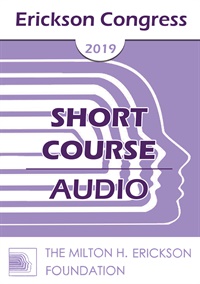
- Average Rating:
- Not yet rated
- Topic Areas:
- Short Courses | Core Competencies of Ericksonian Therapy | Seeding | Hypnosis | Psychotherapy | Ericksonian Hypnosis and Therapy Techniques
- Categories:
- Erickson Congress | Erickson Congress 2019
- Faculty:
- Julio Juanes Rubert, LP, MA
- Duration:
- 1 Hour 15 Minutes
- Format:
- Audio Only
- Original Program Date:
- Dec 12, 2019
- Short Description:
- The ability that Dr. Milton Erickson had for “reading the patient” and get information from them in order to build a context in which change was easy to obtain is an area that has been often overlooked due to the difficulty to understand the process that he was using. In what way was he carefully observing the patient to gain personal information from them? Several techniques will be listed and demonstrated in order to become an observant and strategic therapist.
- Price:
- $15.00 - Base Price
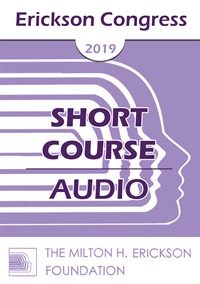
- Average Rating:
- Not yet rated
- Topic Areas:
- Short Courses | Depression | Trauma | Seeding | Therapeutic Relationship
- Categories:
- Erickson Congress | Erickson Congress 2019
- Faculty:
- Robert Wubbolding, EdD
- Duration:
- 1 Hour 24 Minutes
- Format:
- Audio Only
- Original Program Date:
- Dec 12, 2019
- Short Description:
- The American novelist William Faulkner stated, "The Past is never dead. In fact, it is not even past." This presentation emphasizes the unconventional use of reality therapy that connects the past with the presents by helping clients realize that their current behaviors are normal responses to abnormal situations that they have experienced. It also operationalizes the Ericksonian principle: "The solution often appears unrelated to the problem."
- Price:
- $15.00 - Base Price
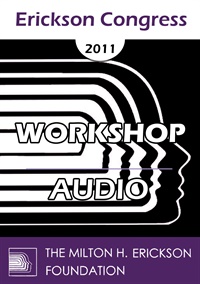
- Average Rating:
- Not yet rated
- Topic Areas:
- Hypnotherapy | Trance | Workshops | Art and Creativity | Ericksonian Hypnosis and Therapy Techniques | Music | Seeding | Mind-Body | Resistance
- Categories:
- Erickson Congress | Erickson Congress 2011
- Faculty:
- Anita Jung, M.S.
- Duration:
- 59 Minutes
- Format:
- Audio Only
- Original Program Date:
- Dec 07, 2011
- Short Description:
- Music within a hypnotherapy model functions as a catalyst accentuating the nuances of seeding, guiding associations, and deepening trance states. Participants will experience and practice how to musically transform mood states, utilize music creatively and effectively within a hypnotherapy session, and explore the latest research on the melody-mind-body link.
- Price:
- $20.00 - Base Price
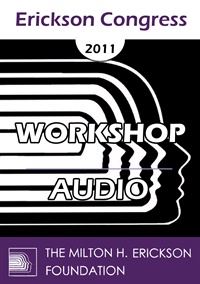
- Average Rating:
- Not yet rated
- Topic Areas:
- Workshops | Meditation, Spirituality and Yoga | Multicultural | Ericksonian Hypnosis and Therapy Techniques | Neuroscience | Seeding | Utilization
- Categories:
- Erickson Congress | Erickson Congress 2011
- Faculty:
- Marilia Baker, MSW
- Duration:
- 59 Minutes
- Format:
- Audio Only
- Original Program Date:
- Dec 07, 2011
- Short Description:
- Participants are invited to explore and transform Ericksonian methods by creating meaningful associations to three cutting-edge conceptualizations. How the Principle of Uncertainty or of quantum potentials, for instance, is applicable to seeding & utilization; how Erickson’s existential philosophy is consistent with indicators of high Spiritual Intelligence (SQ), and how Rossi’s avant-garde proposals envelop all of them.
- Price:
- $20.00 - Base Price
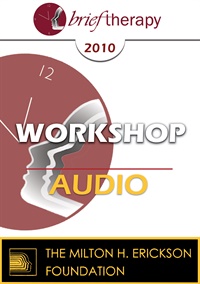
- Average Rating:
- Not yet rated
- Topic Areas:
- Hypnosis | Workshops | Positive Psychology | Mindfulness
- Categories:
- Brief Therapy Conference | Brief Therapy Conference 2010
- Faculty:
- Michael Yapko, PhD
- Duration:
- 2:11:10
- Format:
- Audio Only
- Original Program Date:
- Dec 12, 2010
- Short Description:
- This session explores the interface of mindfulness, hypnosis, and positive psychology as goal-oriented, experiential processes. Emphasizing acceptance, dissociation, and suggestibility, the workshop highlights how guided practices shape perception, regulate mood, and foster self-compassion. Participants learn practical strategies for utilizing suggestion, priming, and attentional focus to transform avoidance into resilience and to amplify clients’ inner resources in both therapy and everyday life .
- Price:
- $15.00 - Base Price
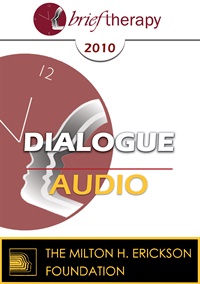
- Average Rating:
- Not yet rated
- Topic Areas:
- Dialogues | Goals of the Therapist | Behavioral Therapy
- Categories:
- Brief Therapy Conference | Brief Therapy Conference 2010
- Faculty:
- Michael Yapko, PhD | James Prochaska, PhD
- Duration:
- 1:00:38
- Format:
- Audio Only
- Original Program Date:
- Dec 11, 2010
- Short Description:
- This dialogue weaves together clinical stories and research to explore how clients can sustain change and prevent relapse. Examples range from smoking cessation in the Air Force to adolescents learning coping skills for stress, showing how readiness, expectancy, and experiential methods influence outcomes. Hear how hypnosis, mindfulness, and feedback can strengthen self-regulation, while goal-setting frameworks help clients progress through stages of change and avoid relapse.
- Price:
- $15.00 - Base Price
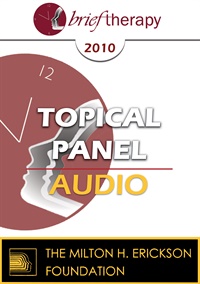
- Average Rating:
- Not yet rated
- Topic Areas:
- Depression | Topical Panels | Brief Therapy | Psychopharmacology
- Categories:
- Brief Therapy Conference | Brief Therapy Conference 2010
- Faculty:
- Jon Carlson | Bill O'Hanlon, MS | Casey Truffo, M.S.,M.F.T. | Michael Yapko, PhD
- Duration:
- 58:30
- Format:
- Audio Only
- Original Program Date:
- Dec 11, 2010
- Short Description:
- This panel explores the challenges and opportunities of brief therapy for depression in today’s cultural climate. Panelists critique medication’s limits, emphasize prevention, and highlight the value of experiential methods such as mindfulness, hypnosis, exercise, and group therapy. Participants gain practical approaches for teaching coping and social skills, reducing relapse, and addressing the broader social dimensions of depression—loneliness, disconnection, and consumer-driven views of mental health.
- Price:
- $15.00 - Base Price
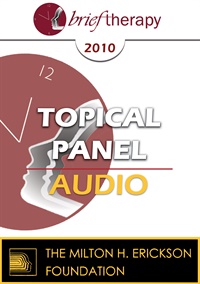
- Average Rating:
- Not yet rated
- Topic Areas:
- Topical Panels | Brief Therapy | Psychotherapy
- Categories:
- Brief Therapy Conference | Brief Therapy Conference 2010
- Faculty:
- Steve Andreas, MA, NLP | Sue Johnson, EdD | Michael Yapko, PhD
- Duration:
- 57:19
- Format:
- Audio Only
- Original Program Date:
- Dec 11, 2010
- Short Description:
- This topical panel explores what actually drives change in brief therapy, drawing from experiential work, attachment theory, cognitive approaches, and social psychology. Through lively debate and clinical examples, it examines speed of change, emotional engagement, therapeutic safety, and the therapist’s role in shaping outcomes, while questioning assumptions about technique, goals, and what truly helps clients move forward.
- Price:
- $15.00 - Base Price
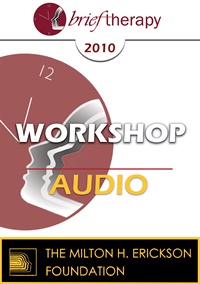
- Average Rating:
- Not yet rated
- Topic Areas:
- Hypnosis | Psychotherapy | Workshops | Strategic Therapy
- Categories:
- Brief Therapy Conference | Brief Therapy Conference 2010
- Faculty:
- Michael Yapko, PhD
- Duration:
- 2:22:02
- Format:
- Audio Only
- Original Program Date:
- Dec 10, 2010
- Short Description:
- This session explores the integration of hypnosis and strategic psychotherapy, highlighting how both approaches emphasize action, expectancy, and experiential learning. Participants learn how to design interventions that disrupt stuck patterns, cultivate tolerance for ambiguity, and foster new skills. Emphasizing hypnosis as a vehicle for seeding ideas and contextualizing resources, the workshop shows how therapists can build responsiveness, resilience, and long-term change in brief yet powerful ways.
- Price:
- $15.00 - Base Price
- Average Rating:
- Not yet rated
- Topic Areas:
- Hypnosis | Fundamentals of Hypnosis | Ericksonian Hypnosis and Therapy Techniques
- Categories:
- Brief Therapy Conference | Brief Therapy Conference 2010
- Faculty:
- Michael Yapko, PhD
- Course Levels:
- Master Degree or Higher in Health-Related Field
- Duration:
- 2:18:50
- Format:
- Audio and Video
- Original Program Date:
- Dec 09, 2010
- Short Description:
- This session provides an orientation to the language, structures, and phenomena of hypnosis, highlighting its role as a vehicle for therapeutic change rather than a standalone therapy. Emphasizing suggestion, dissociation, and automatic responses, the workshop explores how hypnosis enhances psychotherapy by fostering experiential learning and accessing hidden capacities. Participants gain a clear framework for integrating hypnosis into clinical practice, from symptom management to resource activation and reframing, while appreciating its empirical foundations in pain, anxiety, and depression.
- Price:
- $29.00 - Base Price
- Average Rating:
- Not yet rated
- Topic Areas:
- Fundamentals of Hypnosis | Hypnosis | Goals of the Therapist | Psychotherapy
- Categories:
- Brief Therapy Conference | Brief Therapy Conference 2008
- Faculty:
- Michael Yapko, PhD
- Course Levels:
- Master Degree or Higher in Health-Related Field
- Duration:
- 2:47:38
- Format:
- Audio and Video
- Original Program Date:
- Dec 14, 2008
- Short Description:
- This workshop shows how hypnosis can be used as a goal-oriented, brief therapy, illustrated through live demonstrations and group participation. Participants experience how guided attention, metaphor, and suggestion help uncover overlooked resources and reframe familiar struggles. The session highlights real-world examples of how hypnosis amplifies client strengths, manages pain, and supports emotional regulation, offering practical strategies for fostering resilience and change.
- Price:
- $29.00 - Base Price
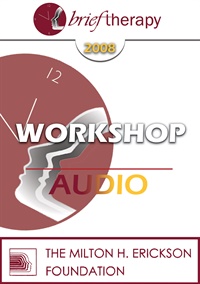
- Average Rating:
- Not yet rated
- Topic Areas:
- Workshops | Seeding | Brief Therapy | Ericksonian Hypnosis and Therapy Techniques | Psychotherapy
- Categories:
- Brief Therapy Conference | Brief Therapy Conference 2008
- Faculty:
- Jeffrey Zeig, PhD
- Duration:
- 2:24:19
- Format:
- Audio Only
- Original Program Date:
- Dec 14, 2008
- Short Description:
- In the literature, music and drama, artists often covertly foreshadow impending events. In social psychology there are myriad studies of priming, an effect by which the accessibility of a future target is increased by the presentation of an earlier cue. Priming effects illuminate important facets of interpersonal responsiveness. Milton Erickson was the first therapist to seed future ideas in the course of strategic therapy and hypnosis. Seeding is an important concept that can increase the effectiveness of interventions regardless of the technique that will be used. We will learn to harness seeding methods through lecture, demonstration and practice.
- Price:
- $15.00 - Base Price
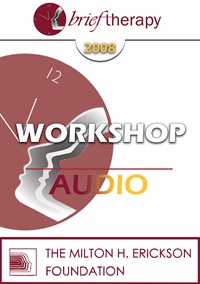
- Average Rating:
- Not yet rated
- Topic Areas:
- Workshops | Hypnosis | Psychotherapy
- Categories:
- Brief Therapy Conference | Brief Therapy Conference 2008
- Faculty:
- Michael Yapko, PhD
- Duration:
- 2:32:58
- Format:
- Audio Only
- Original Program Date:
- Dec 14, 2008
- Short Description:
- This session explores hypnosis as both a subject of modern neuroscience and a practical tool in psychotherapy. Emphasizing dissociation, selective attention, and suggestion, it highlights how hypnosis deepens cognitive and experiential shifts across contexts such as pain management, depression, and memory work. Participants gain a framework for integrating formal and informal hypnosis into their practice, using it not as a therapy in itself but as a powerful way to deliver ideas, evoke resources, and strengthen therapeutic outcomes .
- Price:
- $15.00 - Base Price
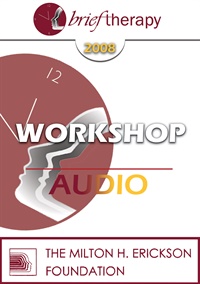
- Average Rating:
- Not yet rated
- Topic Areas:
- Workshops | Depression | Psychotherapy
- Categories:
- Brief Therapy Conference | Brief Therapy Conference 2008
- Faculty:
- Michael Yapko, PhD
- Duration:
- 2:12:27
- Format:
- Audio Only
- Original Program Date:
- Dec 11, 2008
- Short Description:
- As the rate of depression increases around the world, it is apparent that depression is about more than just "bad chemistry." The evidence is clear that social factors play a huge role in depression's onset and course, and these can be better addressed through psychotherapy than with medications. Key aspects of effective treatment will be described in this workshop.
- Price:
- $15.00 - Base Price
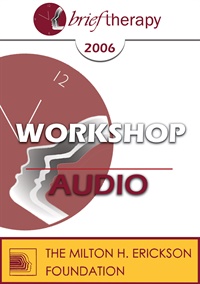
- Average Rating:
- Not yet rated
- Topic Areas:
- Workshops | Hypnosis | Cognitive Behavior Therapy (CBT) | Therapist Development
- Categories:
- Brief Therapy Conference | Brief Therapy Conference 2006
- Faculty:
- Michael Yapko, PhD
- Duration:
- 2:37:17
- Format:
- Audio Only
- Original Program Date:
- Dec 10, 2006
- Short Description:
- This workshop explores the power of expectancy in shaping clinical outcomes and how hypnosis can strengthen it. Participants learn strategies for instilling realistic hope, interrupting negative self-fulfilling prophecies, and fostering future orientation. The session highlights optimism as a therapeutic tool, showing how therapists can help clients believe in change and commit to the process.
- Price:
- $15.00 - Base Price
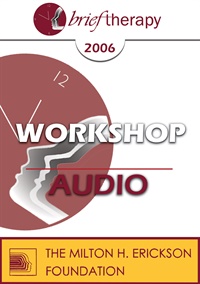
- Average Rating:
- Not yet rated
- Topic Areas:
- Workshops | Cognitive Behavior Therapy (CBT) | Hypnosis
- Categories:
- Brief Therapy Conference | Brief Therapy Conference 2006
- Faculty:
- Michael Yapko, PhD
- Duration:
- 2:39:09
- Format:
- Audio Only
- Original Program Date:
- Dec 10, 2006
- Short Description:
- This session explores how hypnosis enhances cognitive-behavioral therapy by amplifying focus, fostering cognitive flexibility, and reshaping automatic thoughts. Emphasizing experiential learning, the workshop highlights hypnosis as a tool for seeding behavioral activation, building positive expectancy, and helping clients reframe rigid beliefs. Participants gain both a structural model of hypnotic sessions and practical examples of applying hypnosis to depression, anxiety, pain management, and end-of-life care.
- Price:
- $15.00 - Base Price
- Average Rating:
- Not yet rated
- Topic Areas:
- Clinical Demonstrations | Hypnosis | Anxiety | Depression
- Categories:
- Brief Therapy Conference | Brief Therapy Conference 2006
- Faculty:
- Michael Yapko, PhD
- Course Levels:
- Master Degree or Higher in Health-Related Field
- Duration:
- 1:01:08
- Format:
- Audio and Video
- Original Program Date:
- Dec 08, 2006
- Short Description:
- This session shows how hypnosis creates a multidimensional space for problem-solving by amplifying awareness, uncovering blind spots, and fostering new connections. Yapko demonstrates how trance supports clients in moving beyond self-doubt and rigid definitions toward resilience, forgiveness, and self-trust. Participants learn how hypnosis offers a context for integrating cognition, emotion, and spirit into lasting growth.
- Price:
-
Sale is $29.00
price reduced from Base Price - $59.00
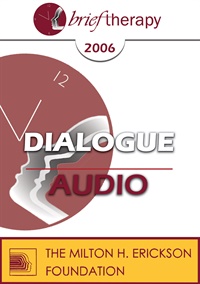
- Average Rating:
- Not yet rated
- Topic Areas:
- Dialogues | Brief Therapy | Sex and Sexuality
- Categories:
- Brief Therapy Conference | Brief Therapy Conference 2006 | Pioneers in Couples and Family Therapy
- Faculty:
- Michele Weiner-Davis, LCSW | Jeffrey Zeig, PhD
- Duration:
- 59:19
- Format:
- Audio Only
- Original Program Date:
- Dec 08, 2006
- Short Description:
- This session explores clinical strategies for working with desire differences in couples, including common patterns like mismatched libido and anxiety-related avoidance. The presenters discuss the shift from spontaneous to responsive arousal with age, the role of hypnosis and psychoeducation, and the importance of helping couples maintain connection, adapt expectations, and approach sex as a collaborative process.
- Price:
- $15.00 - Base Price

- Average Rating:
- Not yet rated
- Topic Areas:
- Workshops | Anxiety | Obsessive Compulsive Disorder (OCD) | Strategic Therapy
- Categories:
- Brief Therapy Conference | Brief Therapy Conference 2006
- Faculty:
- Reid Wilson, PhD
- Duration:
- 2:37:51
- Format:
- Audio Only
- Original Program Date:
- Dec 07, 2006
- Short Description:
- This workshop presents a strategic approach to anxiety that shifts focus from calming down to stepping up. Clients are encouraged to reframe their relationship with anxiety, treat symptoms as opportunities, and seek out discomfort to build resilience. Key techniques include cognitive restructuring, exposure, and distinguishing between signal and noise in worries. Rather than avoiding fear, clients learn to play the "anxiety disorders game"—changing mindset, embracing uncertainty, and expanding their options for handling distress.
- Price:
- $15.00 - Base Price
- Average Rating:
- Not yet rated
- Topic Areas:
- Dialogues | Family Therapy | Psychotherapy | Narrative Therapy
- Categories:
- Evolution of Psychotherapy | Evolution of Psychotherapy 2005 | Pioneers in Couples and Family Therapy
- Faculty:
- Salvador Minuchin, MD | Michael White, B.A.S.W.
- Course Levels:
- Master Degree or Higher in Health-Related Field
- Duration:
- 1:00:10
- Format:
- Audio and Video
- Original Program Date:
- Dec 09, 2005
- Short Description:
- In this rare dialogue, Minuchin and White reflect on their respective journeys and shared values as therapists. They explore how narrative, relationship, and political context shape clinical work. With mutual admiration, they discuss craft, identity, supervision, and the importance of openness and continual skill-building in therapeutic practice. Moderated by Brent Geary, PhD
- Price:
-
Sale is $29.00
price reduced from Base Price - $59.00
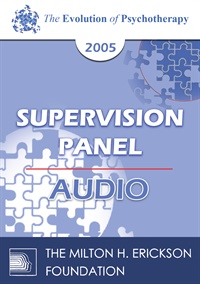
- Average Rating:
- Not yet rated
- Topic Areas:
- Supervision Panels | Supervision | Psychotherapy | Cultural and Social Contexts | Family Therapy | Strategic Therapy | Therapeutic Relationship | Therapist Development
- Categories:
- Evolution of Psychotherapy | Evolution of Psychotherapy 2005 | Pioneers in Couples and Family Therapy
- Faculty:
- James F. Masterson, MD | Salvador Minuchin, MD | Jeffrey Zeig, PhD
- Duration:
- 57 Minutes
- Format:
- Audio Only
- Original Program Date:
- Dec 09, 2005
- Short Description:
- A candid look at real cases presented in supervision, covering issues like school refusal, family tension, and unhealthy relationships. Panelists share a range of strategies—from paradoxical interventions to systemic reframing—while reflecting on how therapist style, client readiness, and family dynamics shape the path forward. Moderated by Camillo Loriedo, MD
- Price:
- $15.00 - Base Price



